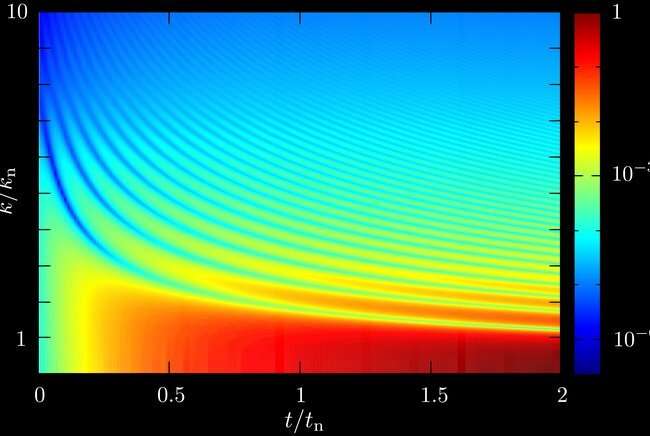Unraveling quantum interactions of 100,000 atoms in gases

Silvia Musolino defended her Ph.D. on new theoretical insights in quantum physics by studying gases at the lowest temperatures consisting of many atoms.
A practical way to study quantum mechanics is provided by gases that have extremely low density and consist of many atoms, often more than one hundred thousand, cooled down to temperatures close to the absolute zero. Silvia Musolino studied different types of interactions between these atoms, providing new pathways for future research on new technologies such as quantum computers.
Quantum mechanical laws govern the physics at the atomic scale and is distinguished by classical mechanics, which deals mainly with natural phenomena we can see, hear, or touch. However, even quantum mechanics influences our daily life. Transistors, which are crucial components of electronic devices, are based on quantum mechanical effects. Moreover, quantum mechanics paves the way for new technologies that may strongly impact our lives, such as quantum computers.
Atoms moving all together
In gases with extremely low density, much lower than the air density, atoms can barely see each other. The behavior of these systems depends only on a few parameters, for example density and temperature. This makes it possible to construct very general theoretical models able to describe many and very different systems.
In quantum mechanics atoms behave as waves with a characteristic length scale, called the thermal wavelength. At low temperatures, this scale becomes larger than the spacing between two atoms, and so the waves associated with the atoms can be summed together leading to collective phenomena, like Bose-Einstein condensation.
When atoms undergo Bose-Einstein condensation, they start moving all together in the same direction and, even if they are many, they behave as one single entity. During her thesis project, Musolino analyzed this phenomenon using the one-body correlation function, which quantifies the mutual connection of the atoms inside the Bose-Einstein condensate.
Formation of composites
Furthermore, she studied other types of correlations considering interactions between atoms. Interactions are characterized by a parameter called the scattering length, which can be interpreted as the distance from the atom in which the interactions effectively work. Strong interactions mean that the scattering length is much larger than the spacing between the atoms. In particular, Musolino considered strong interactions induced by a rapid change of the scattering length in time; this makes the correlations dependent on time and drives the system out of equilibrium.
An atom is a boson if the number of neutrons in the nucleus is even, otherwise it is a fermion. Bosonic atoms like to stay together, meaning that they can occupy the same state; instead, fermions are 'less social' and two fermions can occupy the same state only if they have two different spins, which is an intrinsic property of the particle.
Since the formation of composites depends on the type of atoms, Musolino developed a general theoretical framework able to track the dynamics of few-body correlations in a system made of many atoms and applied this method to bosonic and fermionic gases.
In this model, she also included experimental features, like the presence of a container trap, which makes the atoms not entirely free to move, and made numerous comparisons with existing experimental data—an important finding. Within her theory, she showed how the presence of composites changes the dynamics of the entire many-body system providing new pathways for future research.
Provided by Eindhoven University of Technology




















